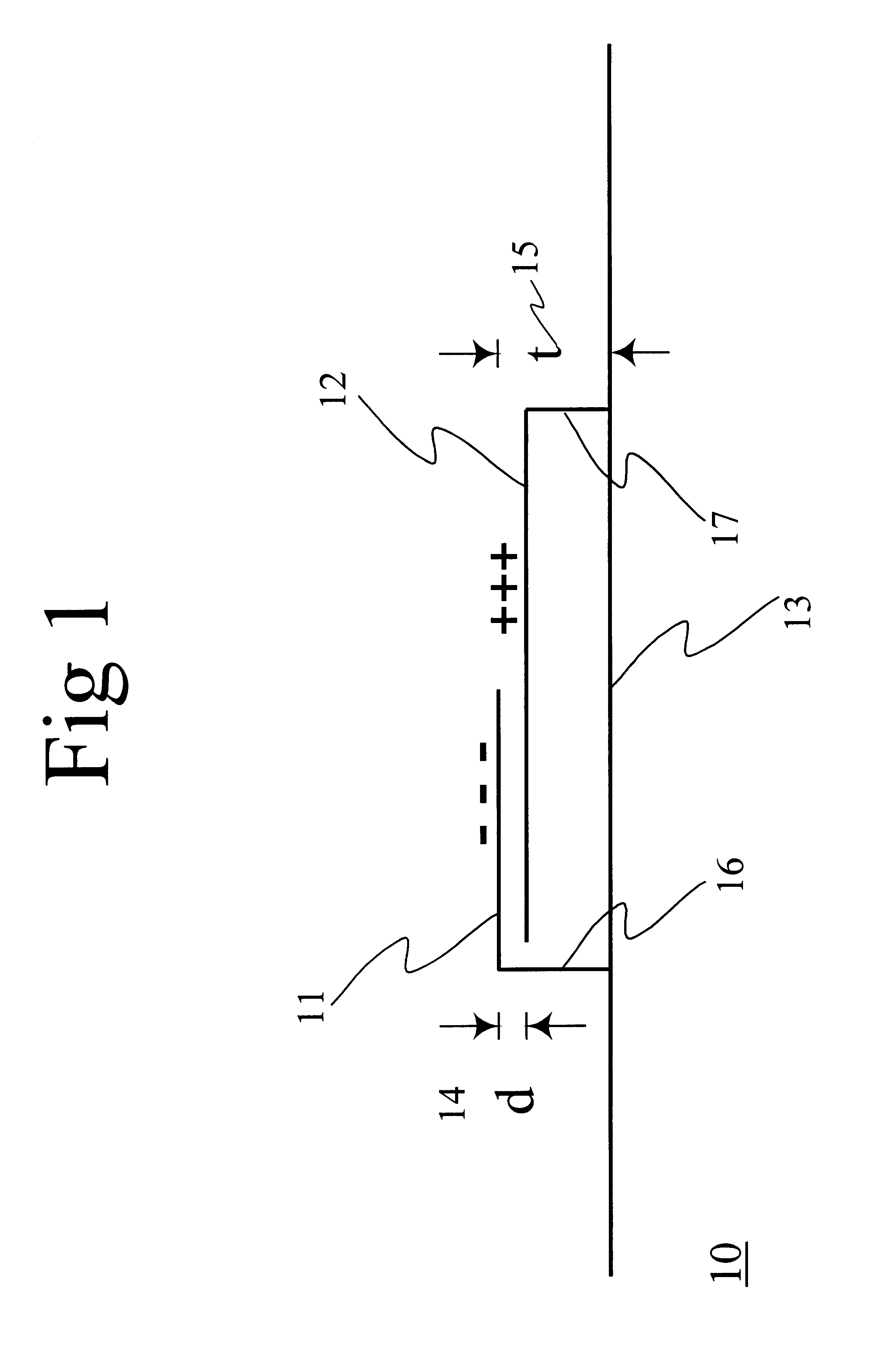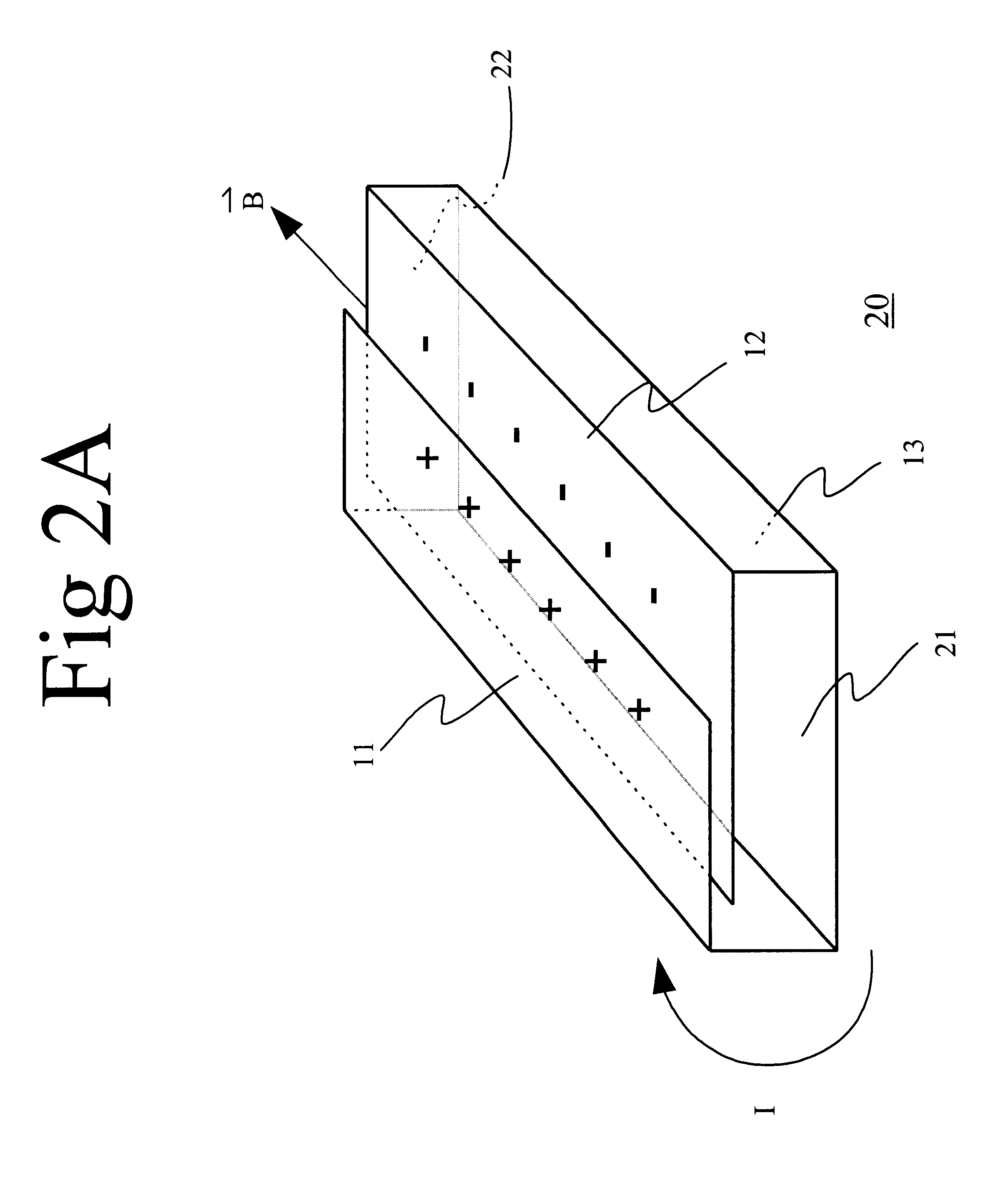Magnetic dipole antenna structure and method
a dipole antenna and magnetic dipole technology, applied in the direction of leaky waveguide antennas, resonance antennas, radiating element structural forms, etc., can solve the problems of increasing cost, weight, efficiency penalty, and usually still too larg
- Summary
- Abstract
- Description
- Claims
- Application Information
AI Technical Summary
Benefits of technology
Problems solved by technology
Method used
Image
Examples
first embodiment
FIG. 5 is a pictorial diagram 50 illustrating a rectangular cylindrical sheet antenna with an opening at each end of the rectangular cylinder, and with a seam connecting the two holes at the ends. The seam comprises of a slot over a double parallel plate. The rectangular cylindrical current distribution structure 50 has a second plate 52 overlapping with a first plate 51 in two areas on either side of the slot or seam to provide capacitance. The third plate 53 is far from the first and second plates 51 and 52, and therefore contributes little to the capacitance. The rectangular cylindrical current distribution structure 50 thus yields the benefit of a large dielectric constant, without the need for a special dielectric material. However, the capacitance is diminished by a factor 4 due to the two capacitors in series from the overlap of the first and second plates 51 and 52,compared to the same two plates in parallel.
second embodiment
FIG. 6 is a pictorial diagram 60, a perspective view illustrating a seam configuration in a rectangular cylindrical sheet antenna. A first hole 61 is positioned in the front of the pictorial diagram 60, while a second hole 62 is positioned at the back of the pictorial diagram 60.The rectangular cylindrical sheet antenna may be driven in a number of different ways. A possible approach is to place a wire parallel to the long axis, but off-center to drive currents across the slot. FIG. 7A is a pictorial diagram 70 illustrating this, the second type of drive configuration (of the third seam example, illustrated in FIG. 6) for the rectangular cylindrical sheet antenna. A coaxial feed cable 74 extends and connects through a third plate 73, a second plate 72, and a first plate 71, to an off-center drive wire 75. FIG. 7B is a pictorial diagram 76 illustrating a side view of this second type of drive configuration. A drive wire 77 is shown in cross-section in FIG. 7B.
third embodiment
FIG. 8 is a pictorial diagram 80 illustrating a rectangular cylindrical sheet antenna with a slot seam for producing a magnetic dipole current distribution. The pictorial diagram 80 will not operate at as low a frequency as the spiral sheet structure, all other things being equal, since the capacitance of a slot seam is less than the capacitance of the over-lapping sheets in the spiral sheet structure.
FIG. 9A is a pictorial diagram illustrating a perspective view, and FIG. 9B illustrating a side view, of a first embodiment of a shielded spiral sheet antenna 90 for producing a cylinder-like current distribution. The structure in the shielded spiral sheet antenna 90 is similar to the structure in the spiral sheet antenna 20. A first hole 91 is at one end of the rectangle, and a second hole 92 is at the other end of the rectangle. An over-lapping seam 93, connects the two holes together. In the case of a cellphone the pair of holes 91 and 92 is positioned to face away from a user's ear...
PUM
 Login to View More
Login to View More Abstract
Description
Claims
Application Information
 Login to View More
Login to View More - R&D
- Intellectual Property
- Life Sciences
- Materials
- Tech Scout
- Unparalleled Data Quality
- Higher Quality Content
- 60% Fewer Hallucinations
Browse by: Latest US Patents, China's latest patents, Technical Efficacy Thesaurus, Application Domain, Technology Topic, Popular Technical Reports.
© 2025 PatSnap. All rights reserved.Legal|Privacy policy|Modern Slavery Act Transparency Statement|Sitemap|About US| Contact US: help@patsnap.com



